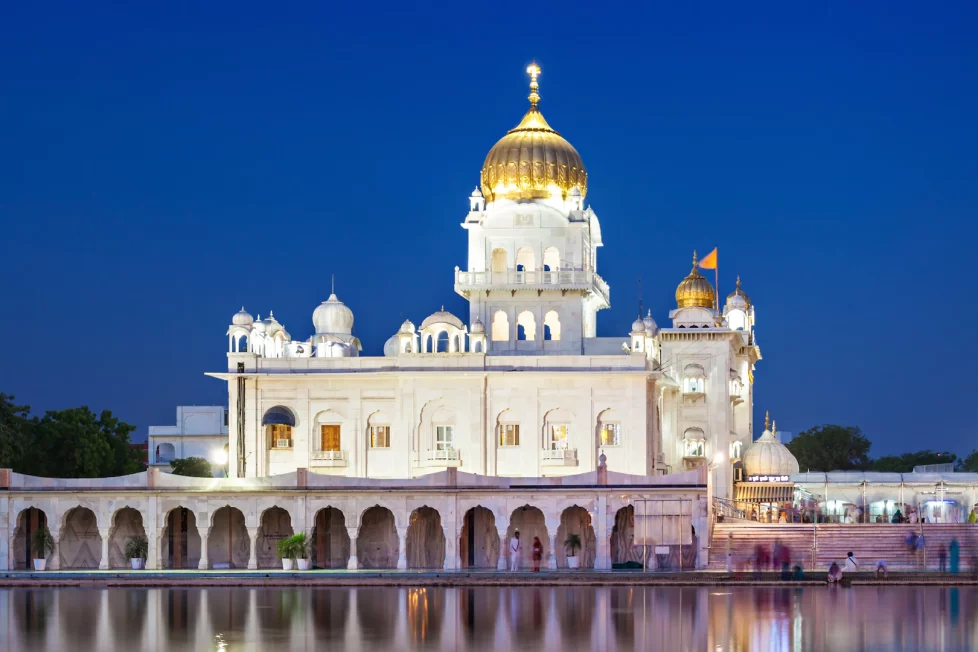When Hindus protected Sikhs!


Gurudwara The first Bangla (palace) of the famous Hindu King Raja Jai Singh was Bangla Sahib. Jai Singh offered to house the 6-year-old Sikh Guru Har Krishan and protected him when Aurangzeb called him. He provided Sikhs with Bangla.
In 1661, Guru Har Krishan was called by Aurangzeb. He desired to endow Ram Rai with the Guru’s guruship rather than the Guru himself. Raja Jai Singh, the Great Rajput king, realised right away that Guru’s life was in peril. He personally travelled to Kiratpur to honour the young Guru.
Guru Har Krishan was called by Aurangzeb to Delhi. The Guru would only be put to death if the summons were broken. However, the Guru was hesitant to travel to Delhi.
We won’t go, the Gurumata Krishan Kaur stated plainly. The Mughals are not to be trusted. Nothing positive ever resulted from them.
When Jai Singh became aware of the obstruction and the threat, he said: “Mother, I assume responsibility for Guru’s safety. He will stay with me. Ich bin Rajput. A Rajput uses this term. I won’t permit the Guru’s tresses to be touched. I’ll risk my life for it. I’ll stand by his side always.”
The Guru and Mata were persuaded. Jai Singh was escorted by the Guru to Delhi.
Jai Singh kept his promise. He served as the Guru’s special defender and representative. On behalf of Guru, he appealed to the monarch.
Jai Singh made sure that Aurangzeb never even saw Guru.
Raja Jai Singh housed the Guru while he was in Delhi in his private bungalow on the fringes of the city. Guru received the highest level of regard and comfort.
A large number of Sikhs visited Guru. The palace was given to Sikhs after Guru passed away, and it subsequently evolved into a Gurudwara.
Rajputs were not the only ones. To defend the Sikh Gurus and their families, numerous Brahmins even gave their lives.
Take Bhai Singha Purohit as an example. He saved Bibi Viro, the Guru Hargobind’s daughter, from the Mughals. He gave his life to safeguard the Guru.
When the Mughals attacked, Guru Hargobind was compelled to flee the Punjab plains for the hills. Guru Hargobind was welcomed by and well-protected by Raja Tarachand of Kahlur. He didn’t offer Shah Jahan any respect. The land for the Guru was given by Raja Tarachand. Kiratpur was constructed by Guru Hargobind here.
Sikh historians like Surjit Singh and Hardeep Syan claim that Raja Tarachand of Kahlur gave the land on which Kiratpur Sahib was constructed.
Raja’s domain was Kiratpur. Raja Tarachand was not a Mughal subject. He offered Guru complete protection from the Mughals on his property.
Aurangzeb detained Guru Tegh Bahadur in November 1665. Guru was going to be put to death. Raja Ram Singh, a Hindu prince, begged the monarch to revoke his decree.
Ram Singh was able to obtain the Guru’s release in the end. The Sikh Guru was rescued and guarded by the Hindu prince.
This is the Raja of the Himachali jagir of Kutlehar. Guru Gobind Singh gave this household this sword. Why?
When the Mughals invaded Anandpur Sahib in 1700, Guru travelled to Kutlehar. Raja of Kutlehar disobeyed instructions from the Mughals. He didn’t kill or give the Mughals Sikhs.
Guru was compelled to abandon his seat and flee to Kutlehar when the Mughals attacked. Guru was in a very serious state. In this instance, the Raja defied instructions from the Mughals and defended the Guru. Raja was chastised by the Mughals for his disobedience. His Jagir was diminished.
1708–1725: The Delhi home of Guru Gobind Singh ji’s Dharmapatni Mata Sundari Ji was pillaged after his death. They had to flee Delhi under duress.
She and her family were given protection from the Mughals by Sawai Jai Singh, who also gave them a nice home in Mathura and a generous stipend for their subsistence.
This was not penned to garner favour or demonstrate any sort of superiority. I admire the gurus, so that is not what I’m trying to do. This article was created to refute false information that Hindus and Sikhs were rivals, and it does so by citing contemporary myths like Gangu Brahman.
DISCLAIMER: The author is solely responsible for the views expressed in this article. The author carries the responsibility for citing and/or licensing of images utilized within the text.
